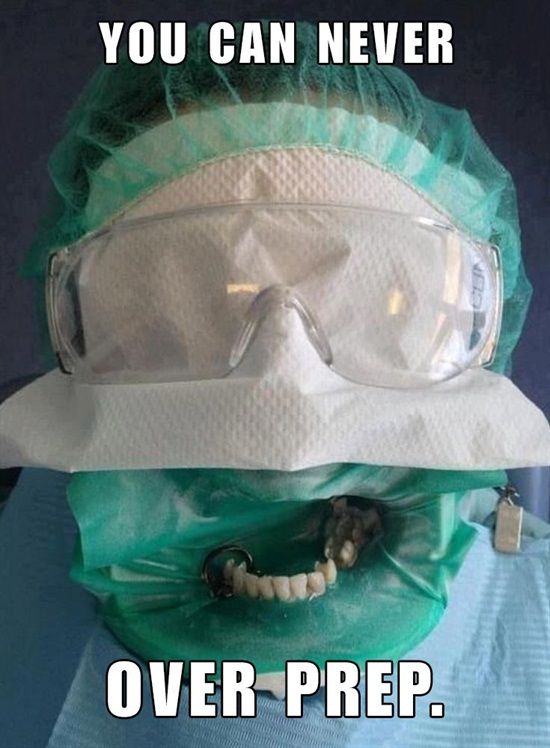Who’s Afraid of a Little Dentistry?
It turns out that quite a few people are afraid of the dentist. Up to 75 percent of adults report that they experience some form of dental anxiety. For the vast majority of dental anxiety sufferers, it’s the more invasive procedures – such as oral surgery – that really sets them off, while more routine procedures are much easier to deal with and provoke only a mild sense of anxiety.
Up to 10 percent of those same adults lean towards phobic on the fear scale, to the point that they avoid dental work until it’s too late. This, of course can lead to more severe dental issues resulting in the necessity of more time in the dentist’s chair, which then results in … more fear of the dentist. A vicious cycle for anyone trying to avoid the dentist. What’s the alternative for someone who experiences anxiety when it comes to dentistry? One answer is; sedation dentistry.
What is sedation dentistry?
Sedation dentistry describes the use of medication to induce a sense of relaxation in patients during dental procedures. Most patients choose the mildest form of sedative, making it possible for them to be awake yet still very relaxed (Conscious Sedation Dentistry). The opposite end of that spectrum is general anesthesia which induces complete unconsciousness. The full range of options runs from minimal – awake and relaxed, moderate – more deeply relaxed (may not remember procedure), deep – still aware but on the edge of consciousness and can be easily awoken, to deep sleep under general anesthesia. Sedation dentistry may also be appropriate for people who:
- Have a low pain tolerance or very sensitive teeth
- Require extensive dental work
- Have anxiety associated with needles
Patients who chose to remain fully to somewhat conscious during the procedure are undergoing what is generally called ‘Conscious Sedation’. Although patients are not completely unconscious while undergoing Conscious Sedation Dentistry, many patients are so relaxed that they may nap through the dental appointment and very few associate any unpleasant memory following the experience. Some added benefits of sedation dentistry may include;
- A shorter treatment time
- Less jaw pain following procedure (particularly in people who suffer from TMJ)
- More dental work can be done in a session
- Less back/neck/shoulder strain (sometimes associated with sitting in a dental chair)
For sedation dentistry, a prescription medication is administered which induces a drowsy, relaxed feeling. This medication can be administered orally or intravenously (IV), depending on the desired results. The use of any sedation medication – with the exception of nitrous oxide – requires the patient to have someone available to drive them to and from the dental office, due to the relaxing effects of the medication that tend to linger after the procedure. The patient’s vital signs are monitored throughout any procedure involving sedation.
Most Common Sedatives Used in Dentistry
Inhaled minimal sedation (just takes the edge off). This form of sedation uses nitrous oxide (laughing gas) mixed with oxygen which is inhaled through a mask over the nose. The dental practitioner is able to control the amount of sedation, and the effects of the gas usually wears off quickly.
Oral sedation (unreliable, but acceptable). The level of sedation achieved using oral sedation can range from minimal to moderate. This involves the ingestion of a pill called Halcion, (related to Valium). This pill is usually taken about an hour before the procedure resulting in a drowsy wakefulness. A slightly larger dose produces a moderate level of sedation – the level most commonly associated with sedation dentistry. It is challenging to tell how much medication is needed the first time someone takes oral sedation. This is because everyone metabolizes medications at different rates. Therefore, the chance of oversedation and undersedation are higher. However, this is still a safe method.
IV moderate sedation (preferred). This requires the use of a sedative applied intravenously. It works quite rapidly and is readily adjustable by the dentist making it possible to regulate the dosage to a patients’ comfort level easier than some other sedation medications. Also, an additional dose can be given in small increments to get you the exact amount of sedation that you require.
Deep sedation and general anesthesia (not as common). Using the above method of application, medications are administered that result in near-to-total unconsciousness during the procedure. This is the stuff you would be given for big cases like heart surgery. While under general anesthesia the patient cannot be easily awakened until the effects of the anesthesia wear off, or until they are reversed with medication.
Who Should Avoid Sedation Dentistry?
As with any medication there is a risk in taking anesthesia. When administered by an experienced dentist who has pre-screened the patient for any potential complication, sedation dentistry is quite safe. Some high risk groups should talk to a doctor before undergoing any type of anesthesia, including those who have a known heart condition, are obese or who suffer from obstructive sleep apnea. Other known risk factors include;
- High blood pressure
- Recent heart health incident
- Uncontrolled hyperthyroidism
- Angina pectoris
- People taking antidepressants, beta blockers or cocaine
SOURCES:
American Dental Association: “Guidelines for the Use of Sedation and Anesthesia by Dentists.”
Reviewed by Michael Friedman, DDS on November 29, 2015
© 2015 WebMD, LLC. All rights reserved.
Kleinknecht RA, Thorndike RM, McGlynn FD, Harkavy J (January 1984). “Factor analysis of the dental fear survey with cross-validation”. J Am Dent Assoc 108 (1): 59–61. PMID 6582116.

